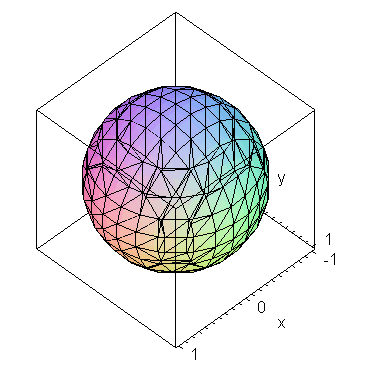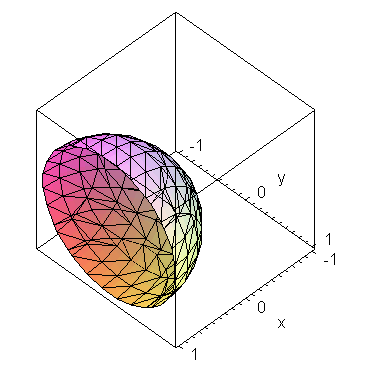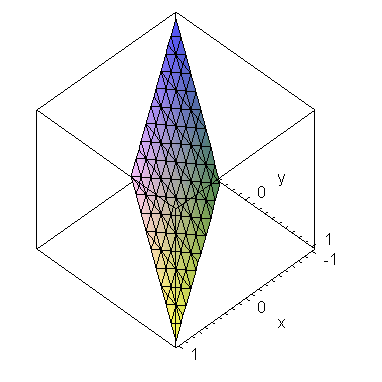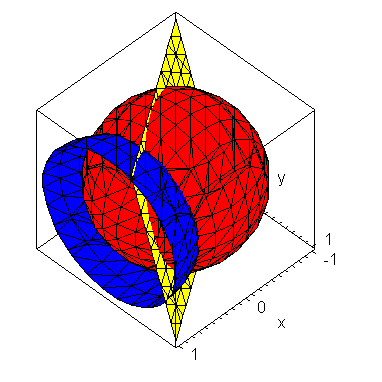Intersection of Surfaces via Groebner Basis Computation
| > | restart; |
| > | eq[1] := x^2 + y^2 + z^2 = 1; |
![]()
| > | eq[2] := x^2 + y^2 + z^2 = 2*x; |
![]()
| > | eq[3] := 2*x - 3*y = z; |
![]()
Use plots to see the surfaces represented by these equations in 3-dimensional space.
| > | with(plots): |
| > | implicitplot3d(eq[1], x=-1..1, y=-1..1, z=-1..1, axes=boxed); |

| > | implicitplot3d(eq[2], x=-1..1, y=-1..1, z=-1..1, axes=boxed); |

| > | implicitplot3d(eq[3], x=-1..1, y=-1..1, z=-1..1, axes=boxed); |

The following command shows all three surfaces in one plot.
By dragging with the mouse, you can rotate the plot to see different views.
| > | implicitplot3d([eq[1],eq[2],eq[3]], x=-1..1, y=-1..1, z=-1..1,
axes=boxed, color=[red,blue,yellow]); |

| > |
Problem:
Find the points of intersection of these three surfaces by using a Groebner basis computation. Show the Groebner basis that you computed, show the intersection points in explicit form in terms of radicals, and also apply ![]() to show the points in floating-point form.
to show the points in floating-point form.
| > | F := [seq(lhs(eq[i])-rhs(eq[i]), i = 1..3)]; |
![]()
| > | G := Groebner:-Basis(F, plex(x,y,z)); |
![]()
| > | _EnvExplicit := true; |
![]()
| > | soln := solve(G, [x,y,z]); |
![[[x = 1/2, y = 3/10-1/20*26^(1/2), z = 1/10+3/20*26^(1/2)], [x = 1/2, y = 3/10+1/20*26^(1/2), z = 1/10-3/20*26^(1/2)]]](images/Intersect_12.gif)
![[[x = 1/2, y = 3/10-1/20*26^(1/2), z = 1/10+3/20*26^(1/2)], [x = 1/2, y = 3/10+1/20*26^(1/2), z = 1/10-3/20*26^(1/2)]]](images/Intersect_13.gif)
| > | evalf(soln); |
![]()
![]()
| > |